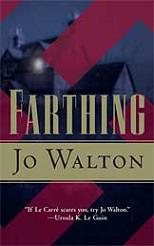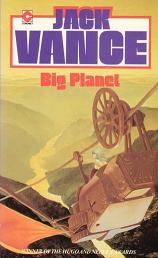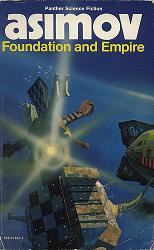
Farthing
Jo Walton
319 pages
published in 2006
At first glance Farthing seems to be a classic English cozy country house mystery, if set in an alternate England. There’s the locked room murder taking place during a weekend party at the Farthing country estate. There are the clues pointing all too neatly at one of the guests. There’s the doughty detective refusing to believe them and there’s the slow deduction of the real killer’s identity and motivations. It all feels like something Agatha Christie or Josephine Tey could’ve written — the latter’s unconscious class snobbery being consciously used here — but in the end Farthing turns out to be something very different from the cozy mystery or even alternate history tale it masquerades as. This is in fact a horror story, with the horror provided not by the plot or the characters, but through the setting. As Ursula Le Guin puts it in her front cover blurb: “If Le Carré scares you, try Jo Walton”.
Farthing grabbed me by the throat from the first page and didn’t let go; one of the very few books to have ever done that. As with any other alternate WWII story, part of that is due to what you know is going on in the background that the characters themselves do not know yet or only suspect. Every such Hitler wins story depends on the tension between what the reader knows happened historically and what the characters in the story know or do not know: sometimes this is done explicit, as in Fatherland, where the whole point of the book is to get the protagonist up to speed on what we as readers already know. In Farthing‘s case though things are kept implicit. What Walton does is let the essential horror of the setting speak for itself, keeping the swastikas and Gestapo goons offstage. What she does in fact is showing that England did not need these props to become a fascist state.



